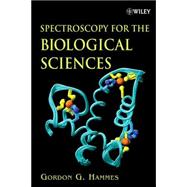
What is included with this book?
| PREFACE | ix | ||||
| 1. FUNDAMENTALS OF SPECTROSCOPY | 1 | (16) | |||
|
1 | (2) | |||
|
3 | (2) | |||
|
5 | (4) | |||
|
9 | (4) | |||
|
13 | (1) | |||
|
14 | (3) | |||
| 2. X-RAY CRYSTALLOGRAPHY | 17 | (18) | |||
|
17 | (1) | |||
|
18 | (4) | |||
|
22 | (3) | |||
|
25 | (1) | |||
|
25 | (3) | |||
|
28 | (2) | |||
|
30 | (2) | |||
|
32 | (1) | |||
|
32 | (3) | |||
| 3. ELECTRONIC SPECTRA | 35 | (28) | |||
|
35 | (1) | |||
|
36 | (2) | |||
|
38 | (2) | |||
|
40 | (1) | |||
|
41 | (3) | |||
|
44 | (2) | |||
|
46 | (1) | |||
|
47 | (4) | |||
|
51 | (1) | |||
|
52 | (2) | |||
|
54 | (3) | |||
|
57 | (1) | |||
|
58 | (1) | |||
|
59 | (4) | |||
| 4. CIRCULAR DICHROISM, OPTICAL ROTARY DISPERSION, AND FLUORESCENCE POLARIZATION | 63 | (26) | |||
|
63 | (2) | |||
|
65 | (1) | |||
|
66 | (1) | |||
|
67 | (2) | |||
|
69 | (2) | |||
|
71 | (3) | |||
|
74 | (3) | |||
|
77 | (1) | |||
|
78 | (2) | |||
|
80 | (1) | |||
|
81 | (3) | |||
|
84 | (1) | |||
|
84 | (5) | |||
| 5. VIBRATIONS IN MACROMOLECULES | 89 | (14) | |||
|
89 | (3) | |||
|
92 | (1) | |||
|
92 | (3) | |||
|
95 | (3) | |||
|
98 | (2) | |||
|
100 | (1) | |||
|
101 | (1) | |||
|
102 | (1) | |||
| 6. PRINCIPLES OF NUCLEAR MAGNETIC RESONANCE AND ELECTRON SPIN RESONANCE | 103 | (26) | |||
|
103 | (3) | |||
|
106 | (2) | |||
|
108 | (2) | |||
|
110 | (2) | |||
|
112 | (3) | |||
|
115 | (6) | |||
|
121 | (1) | |||
|
122 | (3) | |||
|
125 | (1) | |||
|
125 | (4) | |||
| 7. APPLICATIONS OF MAGNETIC RESONANCE TO BIOLOGY | 129 | (16) | |||
|
129 | (1) | |||
|
129 | (3) | |||
|
132 | (1) | |||
|
133 | (3) | |||
|
136 | (3) | |||
|
139 | (3) | |||
|
142 | (1) | |||
|
142 | (3) | |||
| 8. MASS SPECTROMETRY | 145 | (18) | |||
|
145 | (1) | |||
|
145 | (4) | |||
|
149 | (1) | |||
|
150 | (1) | |||
|
150 | (4) | |||
|
154 | (1) | |||
|
154 | (3) | |||
|
157 | (3) | |||
|
160 | (1) | |||
|
161 | (1) | |||
|
161 | (2) | |||
| APPENDICES | |||||
|
163 | (2) | |||
|
165 | (2) | |||
|
167 | (2) | |||
| INDEX | 169 |
The New copy of this book will include any supplemental materials advertised. Please check the title of the book to determine if it should include any access cards, study guides, lab manuals, CDs, etc.
The Used, Rental and eBook copies of this book are not guaranteed to include any supplemental materials. Typically, only the book itself is included. This is true even if the title states it includes any access cards, study guides, lab manuals, CDs, etc.